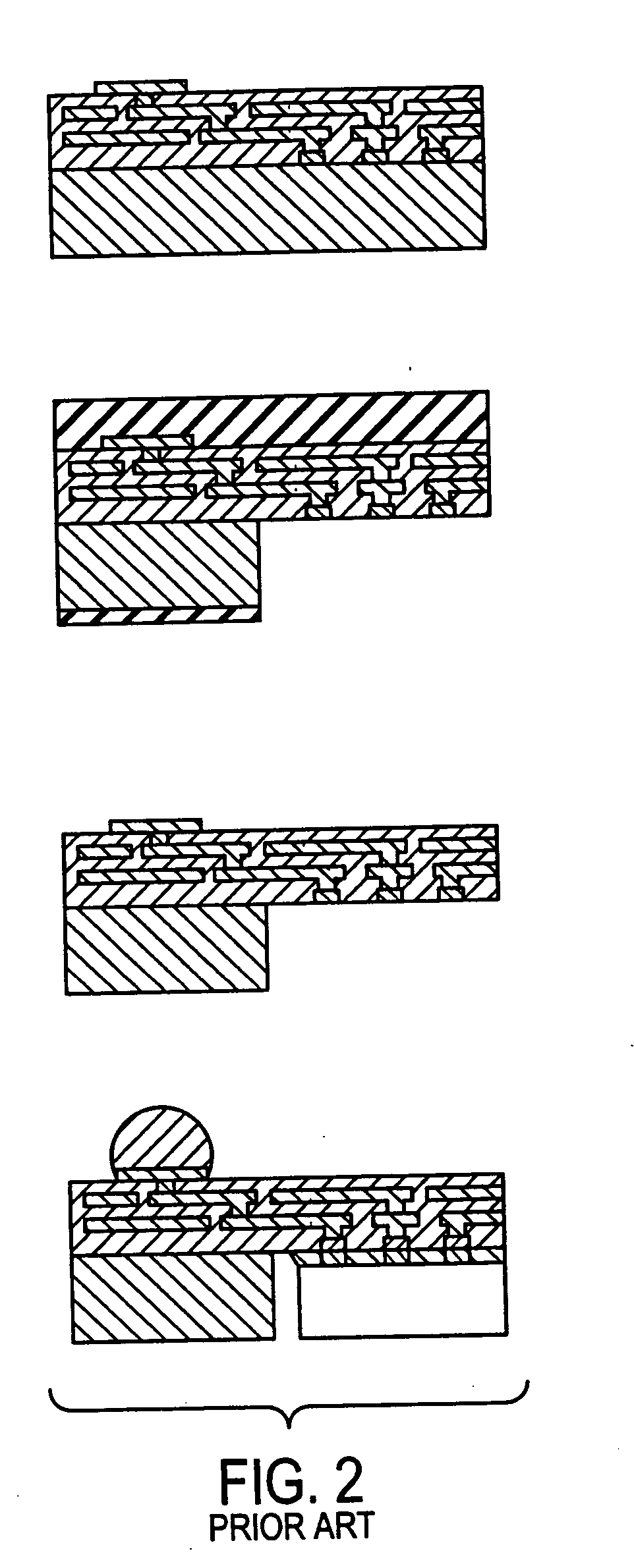Build-up structures with multi-angle vias for chip to chip interconnects and optical bussing
a technology of optical bussing and build-up structures, which is applied in the direction of television systems, instruments, and semiconductor/solid-state device details, etc., can solve the problems of complex build-up on die processing, difficult work of providing escape routing through circuitry on the chip scale package, and even more problems, so as to improve the testability of the die, improve signal routing, and reduce the amount of required circuitry layers
- Summary
- Abstract
- Description
- Claims
- Application Information
AI Technical Summary
Benefits of technology
Problems solved by technology
Method used
Image
Examples
Embodiment Construction
[0039] Reference will now be made in detail to preferred embodiments of the present invention, examples of which are illustrated in the accompanying drawings.
[0040] A build-up electrical structure that is fabricated with a build-up process and multi-angle vias for interconnecting die or multiple die and / or passive components such as capacitors, Microelectromechanical Machines (MEMs), Nanoelectromechanical Machines (MEMs), Bioelectromechanical Machines (BioMEMs), sensors, planar capacitors, resistors, planar resistors, inductors, fuel cells, antennas, thin film batteries, VCSEL's, photodiodes, or other active and passive components is described herein. Typical preferred process times and temperatures are 350° C. for one hour with normal prepregs, 250° C. for 90 seconds with mesoporous materials and 350° C. for 20 seconds for anistropic conductive adhesives. Typical process temperatures for very high Tg photo-imageable dielectrics would be 375° C. for 1 hour. Via formations are prefe...
PUM
 Login to View More
Login to View More Abstract
Description
Claims
Application Information
 Login to View More
Login to View More - R&D
- Intellectual Property
- Life Sciences
- Materials
- Tech Scout
- Unparalleled Data Quality
- Higher Quality Content
- 60% Fewer Hallucinations
Browse by: Latest US Patents, China's latest patents, Technical Efficacy Thesaurus, Application Domain, Technology Topic, Popular Technical Reports.
© 2025 PatSnap. All rights reserved.Legal|Privacy policy|Modern Slavery Act Transparency Statement|Sitemap|About US| Contact US: help@patsnap.com



